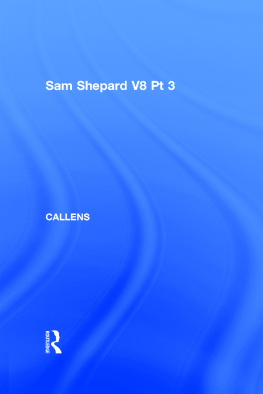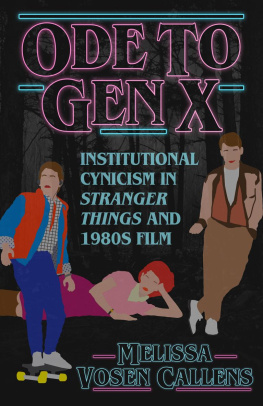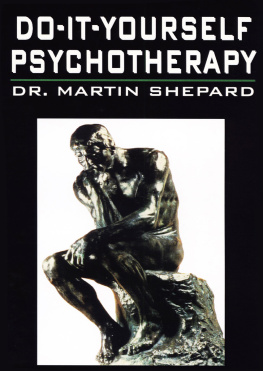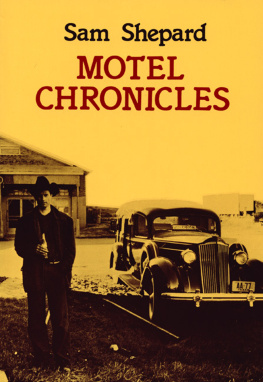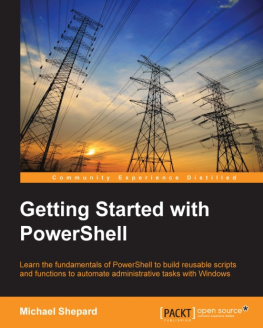Callens - Sam Shepard V8 Pt 3
Here you can read online Callens - Sam Shepard V8 Pt 3 full text of the book (entire story) in english for free. Download pdf and epub, get meaning, cover and reviews about this ebook. publisher: Taylor and Francis;Routledge, genre: Detective and thriller. Description of the work, (preface) as well as reviews are available. Best literature library LitArk.com created for fans of good reading and offers a wide selection of genres:
Romance novel
Science fiction
Adventure
Detective
Science
History
Home and family
Prose
Art
Politics
Computer
Non-fiction
Religion
Business
Children
Humor
Choose a favorite category and find really read worthwhile books. Enjoy immersion in the world of imagination, feel the emotions of the characters or learn something new for yourself, make an fascinating discovery.
- Book:Sam Shepard V8 Pt 3
- Author:
- Publisher:Taylor and Francis;Routledge
- Genre:
- Rating:5 / 5
- Favourites:Add to favourites
- Your mark:
- 100
- 1
- 2
- 3
- 4
- 5
Sam Shepard V8 Pt 3: summary, description and annotation
We offer to read an annotation, description, summary or preface (depends on what the author of the book "Sam Shepard V8 Pt 3" wrote himself). If you haven't found the necessary information about the book — write in the comments, we will try to find it.
Sam Shepard V8 Pt 3 — read online for free the complete book (whole text) full work
Below is the text of the book, divided by pages. System saving the place of the last page read, allows you to conveniently read the book "Sam Shepard V8 Pt 3" online for free, without having to search again every time where you left off. Put a bookmark, and you can go to the page where you finished reading at any time.
Font size:
Interval:
Bookmark:

SAM SHEPARD
BETWEEN THE MARGIN
AND THE CENTRE (1)
In memory of my father (1924-1996)
| Contemporary Theatre Review | 1998 OPA (Overseas Publishers Association) N.V. |
| 1998, Vol. 8, Part 3, pp. 117 | Published by license under |
| Photocopying permitted by license only | the Harwood Academic Publishers imprint, |
| part of the Gordon and Breach Publishing Group. | |
| Printed in India |
Notes on Contributors
.
The present issue of Contemporary Theatre Review consists of the Proceedings of the Shepard conference organized in Brussels, 2830 May 1993, by the Belgian Luxembourg American Studies Association and the Free University of Brussels (VUB). Omitted is Barry Daniels's contribution Sometimes music delivers: VoiceCharacterMusic in the Chaikin/Shepard Pieces, whose performative dimension made inclusion here too difficult. Added are the essays by C.W.E.Bigsby, who wanted to but could not attend the conference, and David J.DeRose, chair of one of the sessions. Stanton B.Garner, Jr.s paper, Staging Things: Realism and the Theatrical Object in Shepard's Theatre, has been adapted from his Bodied Spaces: Phenomenology and Performance in Contemporary Drama, pp. 87119, copyrighted () 1994 by Cornell University and used by permission of the publisher, Cornell University Press. Another version of Enoch Brater's American Clocks: Sam Shepard's Time Plays has appeared in Modern Drama vol. 37.4 (Winter, 1994). Carol Rosen's essay, from her forthcoming book, Sam Shepard: A Poetic Rodeo, is here printed with permission from Macmillan.
The Shepard conference was made possible by generous grants from the National Fund for Scientific Research (Belgium), the Embassy of the United States and its Information Service, the Commission for Educational Exchange between the United States of America, Belgium and Luxembourg and the Free University of Brussels (VUB). Valuable logistical help was provided by the Washington Office of Arts America.
I particularly wish to thank Dr. Jos Traest and Madame Simoen, Secretaries-general of the N.F.S.R., Mr. Donald J.McConnell, Charge d'Affaires ad interim of the American Embassy, Mr. Ashley Wills, Public Affairs Officer, and Dr. Mary Ann Ignatius, Cultural Attach, Mr. Brian Gus of Arts America, as well as Ms. Margaret Nicholson, Executive Director of the Commission for Educational Exchange. The nerve centre and mainstay of the operation was, as usual, Mrs. Francine Lercange, Director of the American Studies Centre and BLASA Board Member, assisted on this occasion by Alain Piette of the University of Mons.
Special guest was Joseph Chaikin, for whose electrifying dramatized reading of The War in Heaven (Angel's Monologue) those present were all extremely grateful.
| Contemporary Theatre Review | 1998 OPA (Overseas Publishers Association) N.V. |
| 1998, Vol. 8, Part 3, pp. 117 | Published by license under |
| Photocopying permitted by license only | the Harwood Academic Publishers imprint, |
| part of the Gordon and Breach Publishing Group. | |
| Printed in India |
Johan Callens
Partly an introduction to the present collection, partly an independent essay attempting to stimulate further thought on Shepard, the opening text surveys the playwright's career and evolving critical status over the past three decades, briefly positioning each of the subsequent essays within the larger debate. The paradigm of the margin and the centre as developed by poststructuralists is relied on as a conceptual framework in an attempt to come to terms with some irresolvable tensions pertaining to Shepard's work: those between actor and writer, text and performance, artist and critic. These tensions, deriving from a lingering logocentric impulse and its concomitant suppression of writing, are exemplified primarily in the essay Language, Visualization and the Inner Library, though Cowboys #2 and Action are also discussed at more length, for their ambiguous acknowledgements of the textual inscription of Shepard's performance aesthetics.
KEY WORDS: Anti-intellectualism, Canonization, Conservatism, Female characters, Improvisation, Margin/Centre, Play (indeterminacy).
Editing a collection of essays on Sam Shepard under the title Between the Margin and the Centre is to propose specific, if not always univocal, terms for a complex, critical debate.
Two books which became available only after the Brussels Shepard conference, upon which this collection is based, had taken place and the bulk of this introduction had been composedStratos Constantinidis's Theatre Under Deconstruction? A Question of Approach (1993) and Erik MacDonald's Theater at the Margins: Text and the Post-Structured Stage (1993)explicitly address these terms. Both apply Derrida's textual margin to the theatre and make a point of defending deconstruction and the post-structured stage (a term coined to protest the unifying, mastering assumptions of poststructuralism) against allegations of ahistoricity, political irresponsibility, or ideological neutrality. It is a defence to which my subsequent treatment of Shepard's evolving status indirectly contributes. I could also have had recourse to earlier works, like Michael Vanden Heuvel's Performing Drama/Dramatizing Performance: Alternative Theater and the Dramatic Text (1991), whose first chapter The Avant-Garde Urge and the Margins of Performance pertains to the present discussion (e.g. 5056), but I here limit myself to the aforementioned critics.
In Constantinidis's words the centre and the margin are the two dominant metaphors of traditional Western theatre which have, to a detrimental effect, polarized, hierarchized and fixed the professional landscape. Deconstructive critics proceed first to reverse this hierarchy through a logic of supplementarity, next to displace and dissolve its units. (General titles such as Vanden Heuvel's Performing Drama/Dramatizing Performance exemplify and announce the operation of this logic.) The deconstructionists goal is to establish a three-dimensional continuum that permits an abundance of ever-shifting positions for all theatre artists involved, from playwright at one end of the traditional spectrum to the critic/reader at the other (610). Actually, the notion of such a linear, neatly divided spectrum with specialists separate fiefdoms (the play-wright's, the director's, the scenographer's, the actors, the spectators) is exploded in favour of an ever expanding constellation or (con)text wherein meaning becomes relative and liminal: that is, meaning appears and disappears at the seams of interrelated viewpoints. Meaning is equivocal rather than univocal (25). Within such constellation the play-wrights become readers or interpreters of their own, now writerly texts (in Derrida's and Barthes's sense), whose totality (play text, prompt copy, rehearsal text, performance text) the critics equally participate in by creatively reading and (re) writing. The result is the dissemination of interpretation, its loosening from the moorings of any exclusive, separate and transcendental authoritative voice or consciousness.
In MacDonald's related formulation and interpretation the margin, rather than being the edge or inferior position within a hierarchy that produces a static relationship to a center stage [] is a limit at which the text encounters, among other things, its philosophical Other. In this space, doubled understandings (at the intersection of Same/Other) appear as folds in the text, revealing in the process that there is always some degree of play within the text (7). Rejecting the word play in the sense of the free play of the signifier, he holds on to its Derridian sense of
Font size:
Interval:
Bookmark:
Similar books «Sam Shepard V8 Pt 3»
Look at similar books to Sam Shepard V8 Pt 3. We have selected literature similar in name and meaning in the hope of providing readers with more options to find new, interesting, not yet read works.
Discussion, reviews of the book Sam Shepard V8 Pt 3 and just readers' own opinions. Leave your comments, write what you think about the work, its meaning or the main characters. Specify what exactly you liked and what you didn't like, and why you think so.

